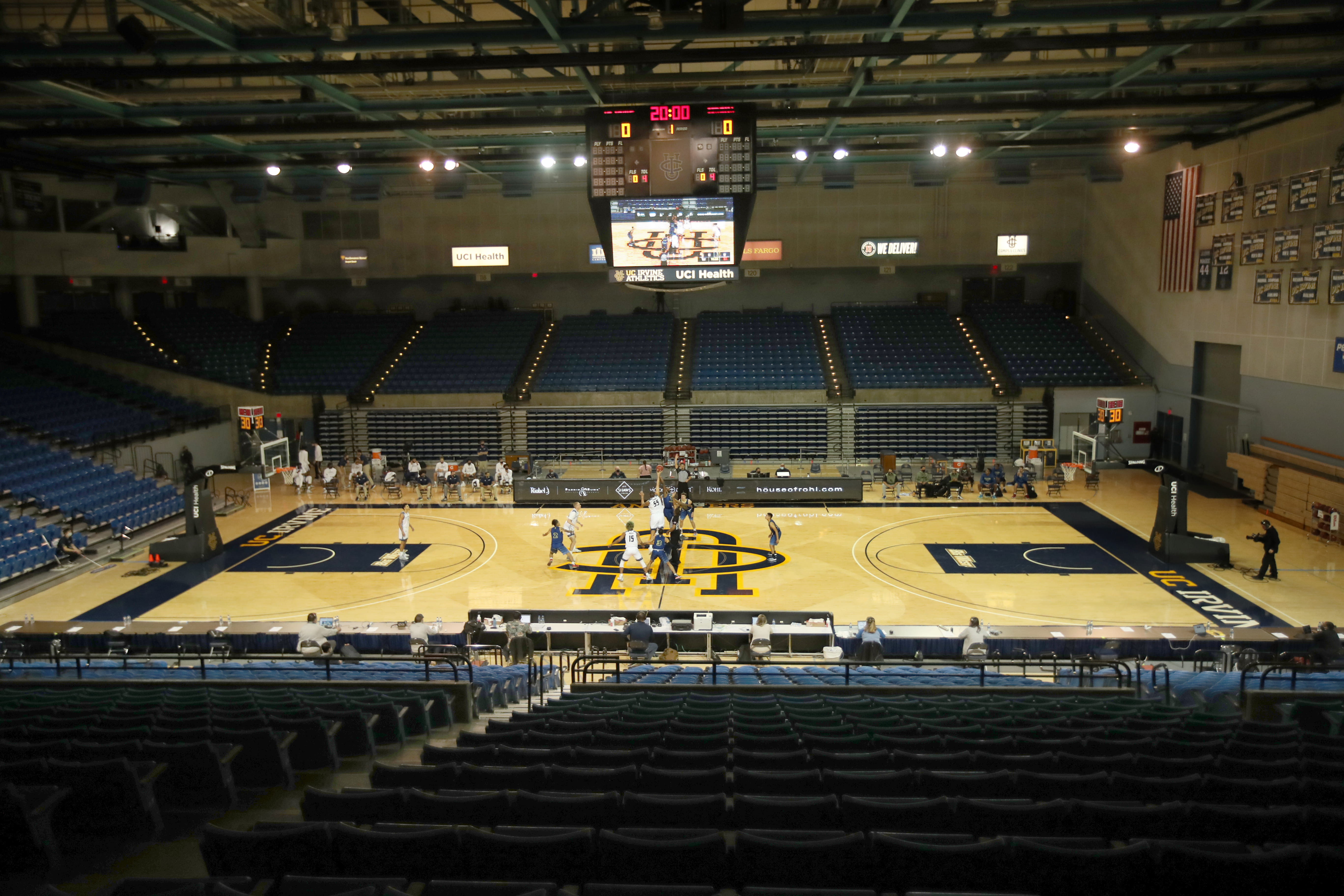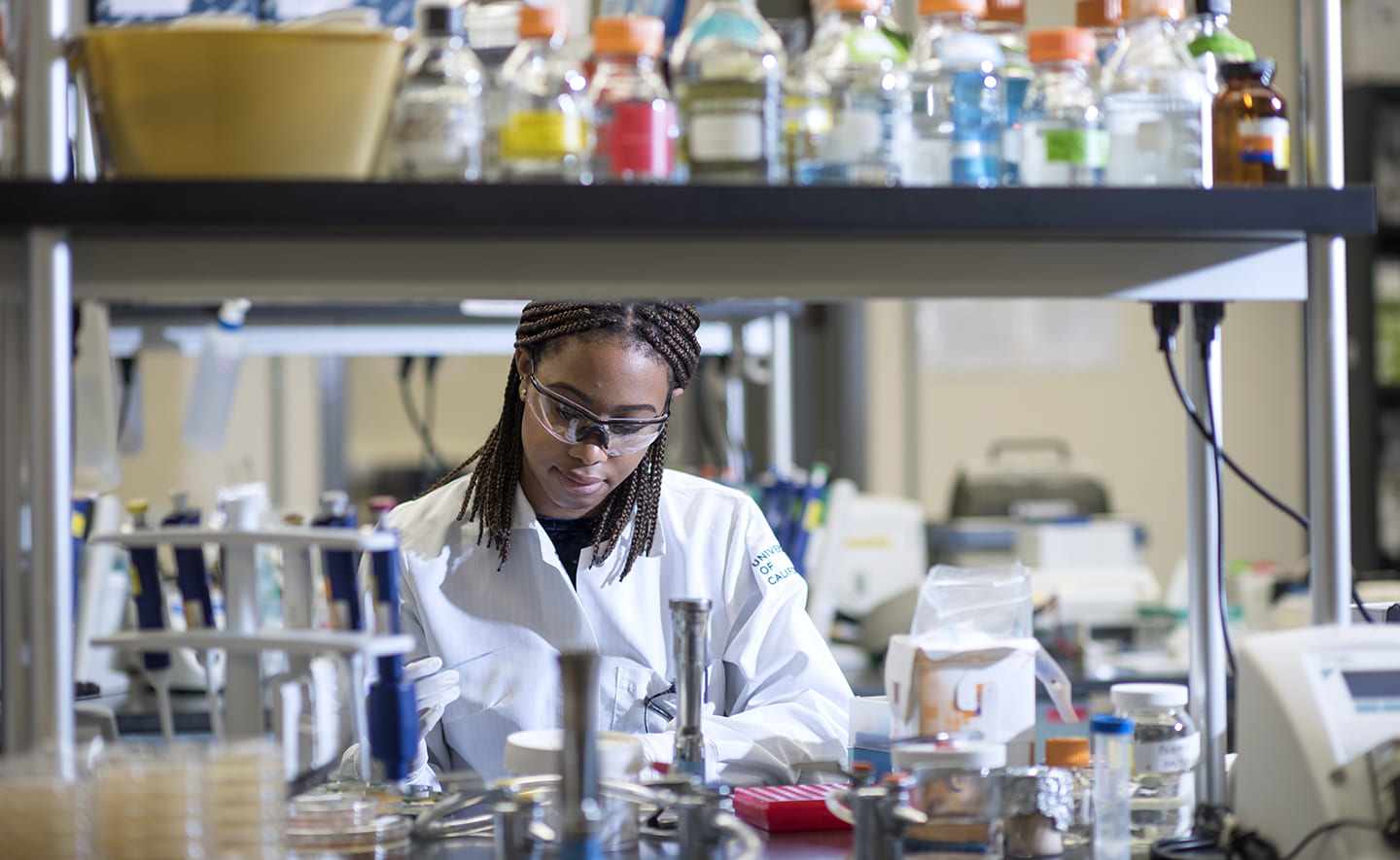Return to competition
UCI Athletics navigates pandemic protocols, postponements and planning snafus to get back in play

With March Madness right around the corner, the world of college basketball will be front and center, and the work to get the season completed should be understood.
Shortly after the first lockdown a year ago, UCI Athletics began working with the NCAA, sports medicine professionals and athletic training associations on how best to bring the players back. Since then, all of UCI’s teams have been training off and on, due to the changing public health landscape, which has been a challenge for the athletes. As a member of NCAA Division I and the Big West Conference, UCI’s sports teams fall under their purview for returning to in-person competition.
“Because of the campus effort and the hands-on assistance from Dr. Albert Chang, medical director of the Student Health Center, and David Souleles, director of UCI’s COVID-19 Response Team, we’ve been able to put in a risk mitigation structure and protocols for the athletes on campus so that everyone feels really comfortable with the planning and what’s occurring,” says Paula Smith, director of intercollegiate athletics.
While working out the eventual return to in-person instruction and student activities, UCI slowly started opening up facilities for small-group strength training and conditioning last summer. It was completely voluntary for the athletes.
UCI Athletics must follow COVID-19 protocols from the state, the county, the NCAA, the conference and the university. “We have five layers of guidance we’re constantly looking at,” says Erica Monteabaro, associate athletic director, “as well as different states’ guidance, which has to be taken into consideration when we play each opponent.”
Typically, training for fall sports – which include men’s and women’s cross country, men’s and women’s soccer, women’s volleyball and men’s water polo – would begin in early August and competition would get underway by the end of August. There were fits and starts with fall sports and then again with winter sports.
The NCAA delayed all fall championships, pushing them to spring, but dealt with basketball differently. Last year’s Big West and NCAA basketball tournaments were canceled due to the state’s initial pandemic lockdown. The UCI men’s basketball squad had captured the Big West regular season title, and was denied a second straight trip to March Madness. Although fall sports were delayed and subsequently canceled, the official NCAA start of the basketball season was moved to Nov. 25, and the Anteater men played Pepperdine that day. Women’s basketball began a few days later.
Both the men’s and women’s teams finished second in the Big West Conference and will be playing this week in the 2021 Air Force Reserve Big West Basketball Championships, presented by the Hawaiian Islands and taking place in Las Vegas. The women face UC Santa Barbara at 5 p.m. today, and the men play either Cal State Fullerton or Cal Poly at 5 p.m. Thursday.
Endless hours of preparation – including planning for quarantining, daily health screenings for practice, contact tracing, COVID-19 testing and testing attestations, game operations protocols, and cleaning and disinfecting – had to be completed before that Nov. 25 game, and the work is ongoing.
“Basketball became the North Star for sports returning to competition,” says Stacey King, assistant athletic director.
Student-athletes, athletic trainers, coaches and staff must adhere to all the COVID-19 protocols. In addition to testing multiple times a week, depending on the sport and opponent, they must follow a screening process to get into a campus facility: showing UCI’s Working Well daily symptom check app and having their temperature taken. At that point, they’re given a wristband that allows them entrance to practice. Coaches don’t have a lot of flexibility to alter practice schedules because each facility must undergo 30 minutes of disinfection with an electrostatic sprayer after use.
“One of the biggest challenges is to rethink how you do everything; baseball dugouts and locker rooms are not business as usual anymore,” Smith says. “Now we’re working with our opponents to make sure we’re coordinated on testing and whether the teams will have locker rooms and access to showers, as well as determining the cleaning protocol.”
While basketball was in full swing, spring sports received the green light from the Big West Conference – of which UCI Chancellor Howard Gillman is chairman of the board – in January, and all athletes are now back training to some degree, including those in the fall sports that aren’t competing for NCAA or conference championships this year.
“Training has been really refreshing,” says Scott Stadick, a member of the men’s volleyball team. “UCI did a great job of ensuring that we’re as safe as we possibly can be in this pandemic. The return-to-play process was appropriately rigorous, but we’re happy to be back to training full speed. Our guys did a great job of getting individual workouts in outside when we were not able to train as a team, so there was really no rust to knock off. We came back ready and eager to start pursuing an NCAA championship.”
Other considerations included uniforms and doing laundry on the road, travel seating charts, grab-and-go meals and myriad logistics. Only essential staff can be at competitions. For basketball games at UCI’s Bren Events Center, for example, just table staff, team supervisors and officials are in attendance. Many of the athletics staff are still working remotely.
“Quarantine goes beyond separation of teams in bubbles or pods,” Monteabaro notes. “We go as far as to quarantine the tennis balls into a Monday bucket, Tuesday bucket and so on.”
Because fans and parents cannot attend competitions, UCI Athletics has stepped up its digital distribution. Events are now streamed on ESPN3, a first for the university. In the Bren, where basketball games are played, there are cardboard cutouts of fans with crowd noise pumped in and recorded voices chanting “Let’s go, ’Eaters!”
Athletics staff has to plan competitions game by game, coping with such curveballs as a date change, needing someone to manage the clock, an athlete quarantining because he or she is a close contact of someone diagnosed with COVID-19, or even a table staff member needing a babysitter. All these things have happened up to a few hours before game time.
“The competitions are so dynamic, and things change by the hour and minute,” King says. “The game has not started until it has started. Only when everyone is in place and ready to go can you relax. It’s a constant balancing act from all different sides. A lot of time is spent dealing with these last-minute changes.”
A delay in getting COVID-19 test results has pushed back game times on several occasions, another example of the ongoing fluid situations that athletics staff has had to address.
Because basketball was the first sport to resume in-person competition last November, there were lessons learned. “We should be really proud of the UCI programs. Everyone has taken [the safety protocols] seriously, and the results show,” King says.
Men’s volleyball, baseball and women’s water polo had their first in-person competitions in February. Men’s and women’s tennis and men’s and women’s golf have also begun competing, and men’s and women’s track & field will run their first meets this month.
Despite the chaos of holding competitions during a pandemic, the athletes would still rather be playing than not.
“It’s all in the name of getting the athletes out on the court, on the field or in the pool safely and getting a chance to play,” says men’s volleyball head coach David Kniffin, a UCI alum. “These kids are passionate, intelligent and in the business of pursuing excellence. Just being in the gym for four hours brings them so much joy. They’re competitive people by nature. And like all Anteaters, they are ‘all in’ on the pursuit.”


